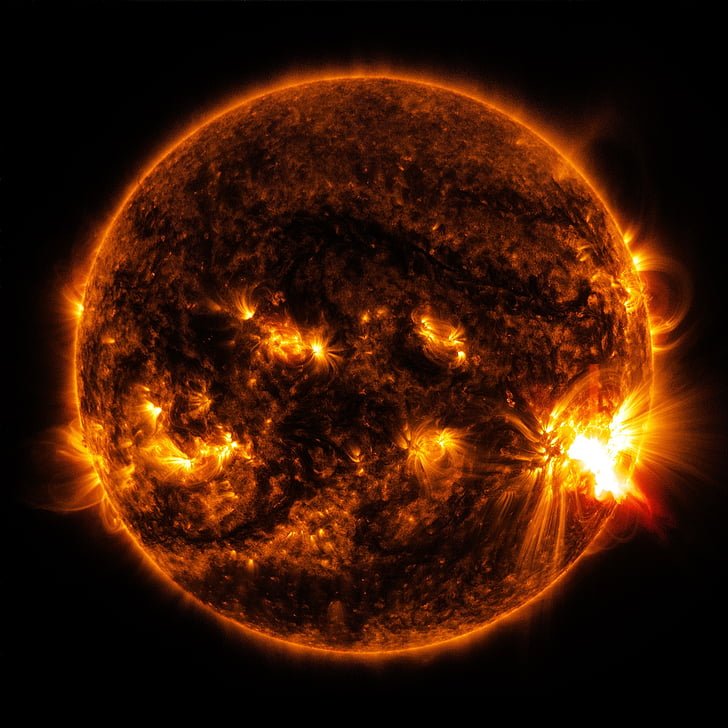What Will Happen if the Sun Keeps Shinning
So I was sitting yesterday, and I was listening to a woman discussing with her friend that there is no place on earth where the sun doesn't set. She was stating with confidence that the sun would always set in the evening and there is no place in the world where the sun doesn't set. Since I couldn't jump into their conversation, there isn't anything one can do about it but if we are to be factual, are there places on earth where the sun doesn't go down?
Svalbard in Norway, Nunavut in Canada, Akureyri and Grimsey Island in Iceland, to mention a few, are places where the sun do not set for a very long time. Some places like Svalbard in Norway, there is sunlight for 24 hours of the day up to 76 days which means they have sunlight for almost 3 months. With that said, what will happen if the sun continues to shine without setting?

It can be very difficult for someone like me to imagine what it will look like to have daily sunrise both during the day and at night so I decided to see some Youtube videos of the sun not setting in places like Antarctica and it showed the sun just changes direction from 9AM to 9PM but doesn't set fully. The sun just creates a circle but doesn't set below the horizon. A Youtuber Cecilia Blomdahl showed what 12 midnight looked like in her on the Norwegian Island of Svalbard.
We know that the Earth revolves around the Sun for 365 days, 5 hours, 48 minutes, and 46 seconds, and rotate around its axis for 23 houes and 56 minutes which makes up a day. When the earth rotates away from the sun on the surface, it gives us the day and night making it look like the sun is moving but in reality, from outside space the sun isn't moving it is the earth moving. The tilting of the sun's axis a little is the cause for the most part of the earth having equal sunlight and darkness. The tilt is about 23.4 degrees and that is why there is the midnight sun in places around the earth beyond 66.5o latitude North or South of the Equator.
When the earth is tilted and rotates around the sun, the top side of it is continually facing the sun for 4 months but with Axial procession, an opposing light or dark exist. This is why in the Southern and the Northern Hemisphere, there are different seasons at opposing time of the year.

The Sun radiates Ultraviolet radiation which is a form of electromagnetic radiation that can damage our skins and our eyes. We live in regions where the UV index is low below 12, but on the mountain top of Licancabur at the Bolivia Chile border, there was a UV record of 43.3. UV radiation is connected to lots of illnesses such as Cataracts, Skin Cancer, Premature aging, and immune suppression. So not having sunset can lead to lots of illnesses, also, we know that too much exposure to the sun can lead to sunburn but we should not forget that people can also have burns on snowy days, and reflection of the sun through snow can cause what is known as snowblindness which is a temporary blindness caused by sun burn to the eyes.
We also know that sunlight is important when it comes to our circadian rhythm. Light affects our melatonin production and this affect our sleep cycle. This means that if the sun doesn't go down, it can have an effect on our circadian rhythm affecting our biological clock. Our circadian rhythm influences hunger, sleep, and sexual drive and if the sun isn't going to set, then it will affect the body, creating an unreliable cycle leading to sleep deprivation.
Heat is another thing that the sun provide for us and we know that if the sun doesn't set, then it will affect us as there will be extreme heat which can lead to increased irritability, loss of concentration, and ability to perform skilled, heavy, and mental tasks. it can also lead to heat related ailments such as rashes, heat swelling, cramps, exhaustion, and heat stroke. It is good that we do not forget that excessive heat can lead to dehydration.
Places where the Sun do not set for a very long time are place that are extremely cold, which are the arctic and the antarctic circles. If we were to expect a continuous sunshine without a set, then the earth would be locked but since it is not locked, we cannot say for sure what would happen but if we are to consider the moon which is a planetary body that is locked and has only one face facing on. After all said, we could say that if the earth becomes locked and the sun keeps shining without setting, we would surely die from one of the numerous sun ailments or diseases associated with UV light or maybe heat.
Reference
https://www.weather.gov/lmk/seasons
https://www.tiktok.com/@sejsejlija/video/6955228950671019270
https://lisbdnet.com/how-long-is-a-year-exactly/#How_long_is_a_year_accurately
https://slate.com/technology/2016/06/why-does-the-sun-never-set-at-the-north-pole-in-the-summer.html
https://www.canada.ca/en/health-canada/services/sun-safety/what-is-ultraviolet-radiation.html
http://www.bccancer.bc.ca/about/news-stories/stories/how-much-sun-is-too-much-sun
https://www.ccohs.ca/oshanswers/phys_agents/heat_health.html
https://www.wheelandanchor.ca/2019/05/norway-whats-it-like-to-live-under-the-midnight-sun/
https://uphere.ca/articles/what-does-24-hours-light-do-people
https://wmo.asu.edu/content/world-highest-temperature
Image Reference
Image 1 || Flickr || Sun and clouds
Image 2 || Pickpik || illustration of sun
Thanks for your contribution to the STEMsocial community. Feel free to join us on discord to get to know the rest of us!
Please consider delegating to the @stemsocial account (85% of the curation rewards are returned).
Thanks for including @stemsocial as a beneficiary, which gives you stronger support.